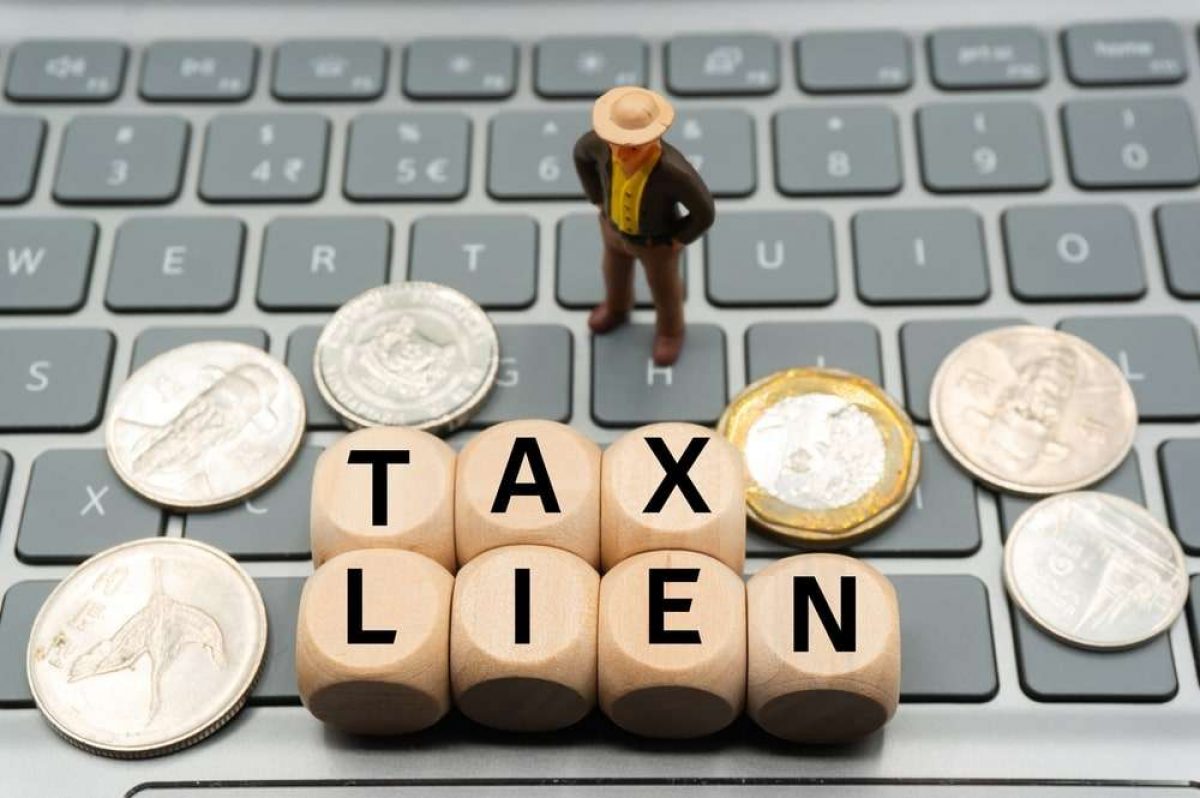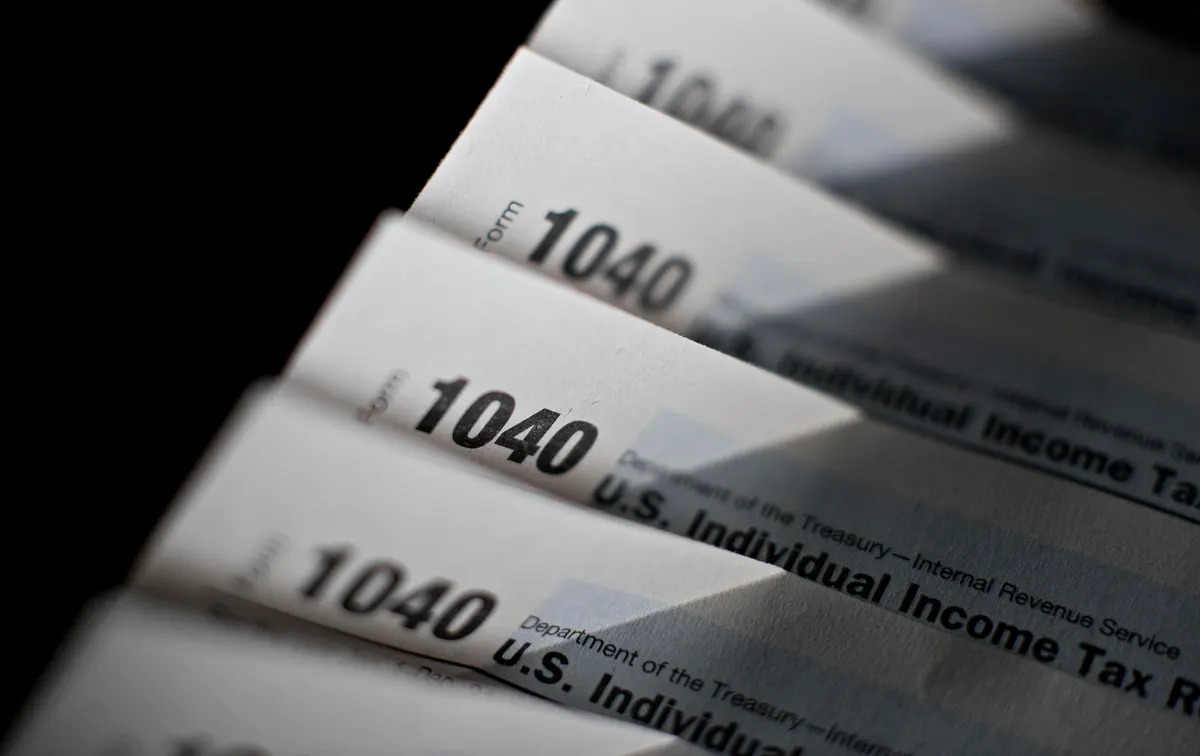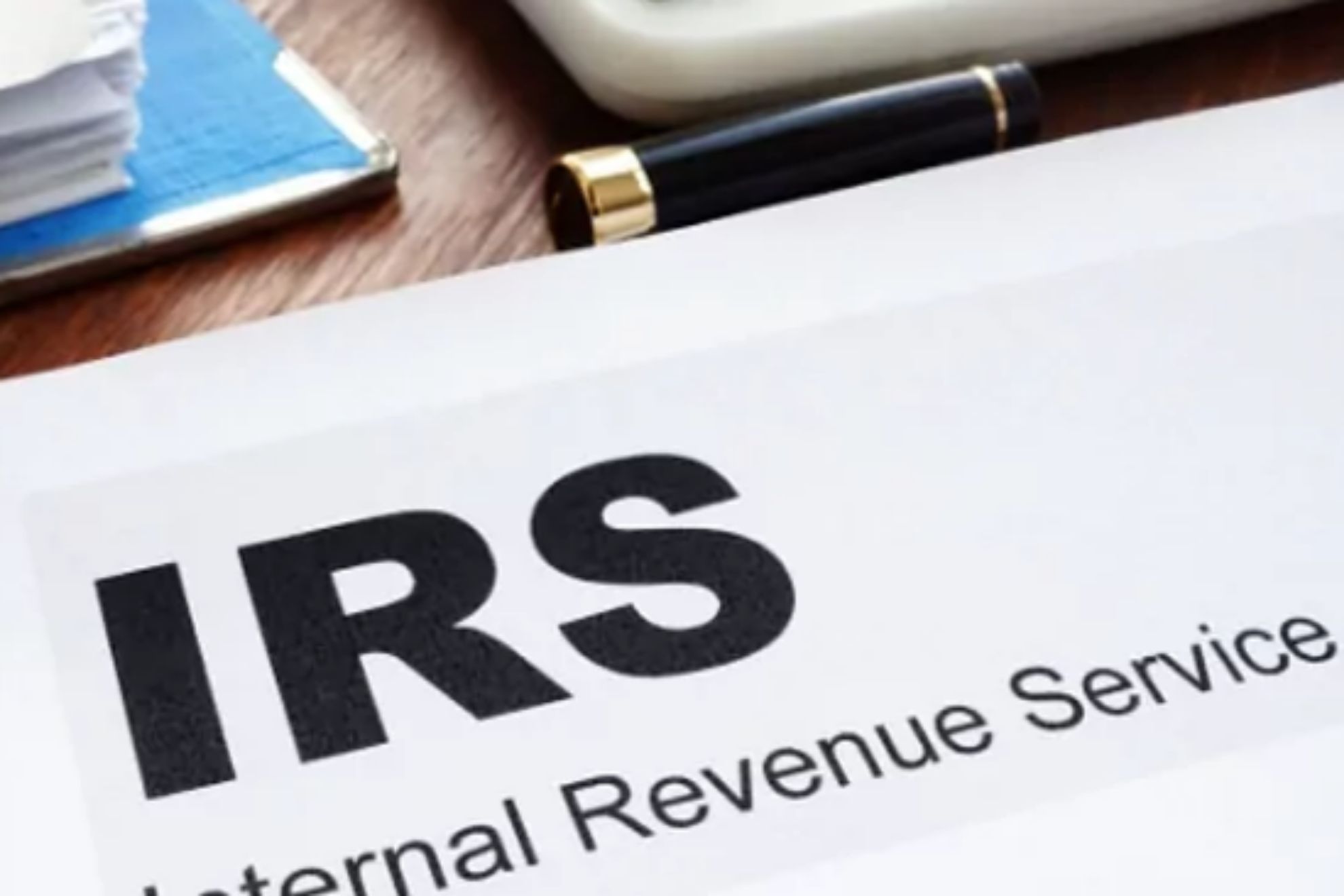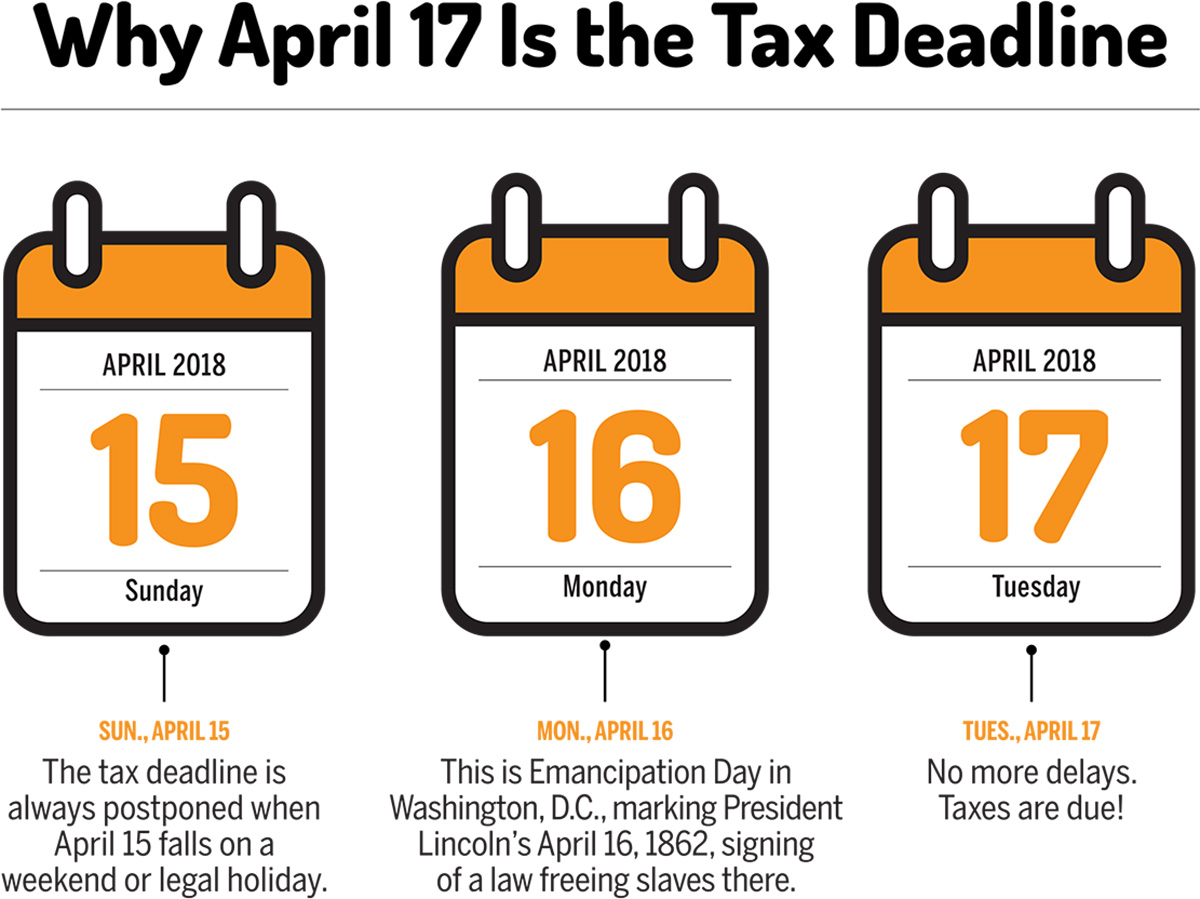

Finance
When Does The IRS File Tax Liens?
Published: October 31, 2023
Looking for information on when the IRS files tax liens? Find out more about tax liens and how they can affect your finances.
(Many of the links in this article redirect to a specific reviewed product. Your purchase of these products through affiliate links helps to generate commission for LiveWell, at no extra cost. Learn more)
Table of Contents
Introduction
In the realm of financial matters, taxes are a significant concern for individuals and businesses alike. Failing to pay taxes or falling behind on tax payments can have serious consequences, one of which is the filing of a tax lien by the Internal Revenue Service (IRS). Understanding when the IRS files tax liens and the implications they carry is essential for anyone looking to maintain their financial well-being.
A tax lien is a legal claim the government places on a taxpayer’s property, including real estate, personal assets, and financial accounts. It serves as a security measure for the government to collect unpaid taxes. When a tax lien is filed, it becomes a matter of public record and can negatively impact an individual’s creditworthiness and financial reputation.
The purpose of this article is to shed light on when the IRS files tax liens and the factors that trigger their issuance. We will also discuss the consequences of having an IRS tax lien and provide insights on how to prevent or remove them.
It’s important to note that tax laws and regulations can vary from country to country and even within different jurisdictions. The focus of this article will primarily be on tax liens as they relate to the Internal Revenue Service in the United States.
So, let’s delve deeper into the world of IRS tax liens to gain a better understanding of their implications and how they can affect individuals and businesses.
What is a Tax Lien?
A tax lien is a legal claim that the government places on a taxpayer’s property when they fail to pay their taxes or have significant outstanding tax debt. It is a way for the government to secure the unpaid taxes by establishing their right to the taxpayer’s assets.
When the IRS files a tax lien, it creates a public record that alerts creditors, lenders, and potential buyers about the taxpayer’s outstanding tax debt. This information remains on the individual’s credit report for up to seven years, making it challenging to obtain credit or secure favorable loan terms.
A tax lien can encompass various types of property, including real estate, personal assets, and financial accounts. It attaches to all current and future assets of the taxpayer until the tax debt is resolved or removed.
Once a tax lien is filed, it affects the taxpayer’s ability to sell or transfer the property in question. It can also limit access to certain financial resources, such as loans or lines of credit, as creditors may be hesitant to provide funds to someone with an outstanding tax debt.
It’s crucial to understand that a tax lien is not the same as a tax levy. While a tax lien is a claim on the property, a tax levy is the actual seizure and sale of the assets to satisfy the tax debt. Although a tax lien does not result in immediate loss of property, it puts the government in a position to take such action if the tax debt remains unpaid.
Overall, a tax lien acts as a powerful tool for the government to ensure tax compliance and to collect unpaid taxes. Understanding how tax liens work and their potential consequences is essential for individuals and businesses alike to stay on top of their tax obligations.
The Purpose of Tax Liens
The primary purpose of tax liens is for the government to secure unpaid taxes and protect its interests. When individuals or businesses fail to pay their taxes, a tax lien serves as a legal claim on their assets, giving the government priority in collecting the outstanding debt.
Here are some key purposes of tax liens:
- Ensuring Tax Compliance: Tax liens act as a deterrent for individuals and businesses to ensure timely payment of their taxes. The threat of a tax lien serves as a motivator for taxpayers to prioritize their tax obligations and avoid the potential consequences.
- Protecting Government Interests: By filing a tax lien, the government establishes its claim on the taxpayer’s assets. This ensures that the government has priority in collecting the unpaid taxes from any proceeds obtained through the sale or transfer of the properties.
- Leveling the Playing Field: Tax liens provide equal treatment to all taxpayers. By placing a lien on the property of individuals or businesses who owe taxes, the government prevents them from disposing of their assets in an attempt to avoid paying their fair share.
- Earning Interest and Penalties: When the government files a tax lien, it can also charge interest and penalties on the outstanding tax debt. This helps to compensate for the delay in receiving the tax payments, as well as serves as an additional deterrent to encourage prompt payment.
- Encouraging Communication and Resolution: The filing of a tax lien often prompts individuals and businesses to address their tax debt. It serves as a wake-up call, urging taxpayers to engage with the IRS or relevant tax authorities to find a resolution, such as setting up a payment plan or negotiating a settlement.
Overall, tax liens serve as a mechanism for the government to protect its interests and encourage tax compliance. By establishing a legal claim on a taxpayer’s assets, tax liens play a critical role in the collection of unpaid taxes and maintaining the integrity of the tax system.
When Does the IRS File Tax Liens?
The IRS may file a tax lien when a taxpayer has a significant amount of unpaid tax debt. However, the exact threshold for when the IRS will file a lien can vary depending on several factors, including the amount owed and the taxpayer’s history of compliance. Here are some situations in which the IRS is more likely to file a tax lien:
- Unpaid Tax Debt: If a taxpayer owes a substantial amount of unpaid taxes, the IRS may file a tax lien to secure its claim on the taxpayer’s assets. The specific amount that triggers a tax lien filing can vary based on factors such as the taxpayer’s income, the number of years of delinquency, and the type of tax owed.
- Repeated Noncompliance: The IRS may be more inclined to file a tax lien if a taxpayer has a history of noncompliance, such as consistently failing to file tax returns or neglecting to pay taxes owed. Chronic noncompliance raises concerns about the taxpayer’s willingness to fulfill their tax obligations, which may prompt the IRS to take stronger action.
- Failure to Respond: If a taxpayer fails to respond to multiple notices and reminders from the IRS regarding their outstanding tax debt, the IRS may intensify their efforts by filing a tax lien. Non-responsiveness can be seen as a refusal to address the tax issue, leading the IRS to pursue more assertive measures.
- Refusal to Enter a Payment Arrangement: The IRS generally prefers to work with taxpayers to develop a reasonable payment plan to address their tax debt. However, if a taxpayer refuses to cooperate or fails to adhere to the terms of a payment arrangement, the IRS may escalate the collection efforts by filing a tax lien.
- Protecting the Government’s Interests: In some cases, even if the tax debt is not excessively high, the IRS may file a tax lien to protect its interests. This may occur if the taxpayer is involved in suspicious financial activities, attempts to transfer assets to avoid paying taxes, or displays a pattern of noncompliance.
It’s important to note that the IRS follows certain procedures before filing a tax lien. They typically send a series of notices, allowing the taxpayer an opportunity to respond and address their tax debt. Filing a tax lien is generally seen as a last resort when other attempts to resolve the tax issue have been unsuccessful.
Understanding when the IRS is likely to file a tax lien can help taxpayers take proactive steps to address their tax debt before it reaches that point. Promptly communicating with the IRS and seeking professional tax assistance can go a long way in preventing the filing of a tax lien and navigating the complexities of tax debt resolution.
Factors that Trigger IRS Tax Liens
The decision to file a tax lien by the Internal Revenue Service (IRS) is influenced by various factors that indicate a taxpayer’s noncompliance or inability to pay their tax debt. Understanding these triggers can help taxpayers take preventive measures and address their tax issues before a tax lien is filed. Here are some factors that may lead to the filing of an IRS tax lien:
- Significant Tax Debt: The amount of unpaid tax debt is a critical factor in determining whether the IRS will file a tax lien. While there is no specific threshold, if the tax debt is substantial, it increases the likelihood of a tax lien being filed to secure the government’s claim on the taxpayer’s assets.
- Delinquent Tax Returns: Failing to file tax returns can be a red flag for the IRS and may trigger the filing of a tax lien. Non-filing suggests a deliberate attempt to evade taxes or neglect of tax responsibilities, prompting the IRS to take more aggressive action to collect the outstanding debt.
- Repeated Nonpayment: Consistently failing to pay taxes owed, despite receiving multiple notices from the IRS, can lead to the filing of a tax lien. The IRS expects taxpayers to fulfill their tax obligations in a timely manner, and persistent nonpayment can indicate a lack of willingness or ability to do so.
- Ignoring IRS Notices: Ignoring or disregarding notices, letters, and other communication from the IRS regarding outstanding tax debt can have serious consequences. Continued non-responsiveness can signal a lack of cooperation and may prompt the IRS to file a tax lien as a means of ensuring payment.
- Asset Concealment or Transfers: Attempting to conceal assets or transfer them to avoid paying taxes is another trigger for the filing of a tax lien. Such actions are viewed as fraudulent and can result in more aggressive enforcement measures, including the seizure and sale of assets.
- Financial Red Flags: Certain financial activities or transactions can raise suspicions and trigger the filing of a tax lien. These can include a sudden decrease in reported income, claims of false deductions or credits, involvement in offshore tax evasion schemes, or other indicators of fraudulent tax practices.
It’s essential to note that the IRS follows a specific process before filing a tax lien, which includes sending multiple notices and providing opportunities for taxpayers to address their tax debt. Filing a tax lien is typically seen as a last resort when all attempts to resolve the issue amicably have been exhausted.
To prevent the filing of an IRS tax lien, taxpayers should stay proactive by responding to IRS communications, filing tax returns on time, and seeking professional assistance if they are unable to pay their taxes in full. Open communication with the IRS and a willingness to address the tax issue can help mitigate the risk of a tax lien and lead to a more favorable resolution.
Consequences of IRS Tax Liens
The filing of an IRS tax lien can have significant consequences for individuals and businesses, extending beyond the immediate financial impact. It’s important to understand these consequences to effectively address tax debt and minimize the long-term implications. Here are some of the potential consequences of IRS tax liens:
- Negative Impact on Creditworthiness: When the IRS files a tax lien, it becomes a matter of public record and can negatively impact an individual’s creditworthiness. The tax lien information is reported to credit bureaus and can remain on the credit report for up to seven years. This can make it challenging to obtain credit, secure favorable loan terms, or even find suitable housing.
- Difficulty in Selling or Transferring Property: An IRS tax lien attaches to the taxpayer’s property, including real estate, personal assets, and financial accounts. This can make it difficult to sell or transfer property as potential buyers or lenders may be hesitant to proceed due to the unresolved tax debt. A tax lien creates a legal claim on the property, making it less attractive to potential buyers.
- Limited Access to Financial Resources: Having an IRS tax lien can limit access to certain financial resources. Lenders and creditors may view a tax lien as a risk, making it challenging to secure loans or lines of credit. The presence of a tax lien may also result in higher interest rates or unfavorable loan terms if credit is extended.
- Professional and Business Implications: Individuals with an IRS tax lien may face professional and business implications. Certain licenses and certifications may require individuals to maintain good financial standing, and a tax lien can impact those qualifications. Additionally, for business owners, a tax lien can lead to damage to their reputation and affect relationships with suppliers, clients, and partners.
- Possible Asset Seizure: While a tax lien itself does not result in immediate loss of property, it puts the government in a position to take further action if the tax debt remains unpaid. If the taxpayer continues to neglect their tax obligations, the IRS may eventually enforce the tax lien through asset seizure and sale to satisfy the outstanding debt.
- Inability to Negotiate Credit Terms: Individuals with an IRS tax lien may find it challenging to negotiate credit terms with creditors, such as lenders, landlords, or utility providers. The presence of a tax lien can create doubt about the individual’s financial stability and ability to meet their financial obligations, making it difficult to secure favorable terms or negotiate repayment plans.
It’s important to note that while the consequences of an IRS tax lien are significant, there are options for addressing and resolving the tax debt. Taking proactive steps, such as working with the IRS or seeking professional tax assistance, can help mitigate the consequences and pave the way for a more favorable financial future.
How to Prevent or Remove an IRS Tax Lien
Preventing or removing an IRS tax lien requires timely action and adherence to certain strategies. While each situation is unique, here are some general steps to help prevent or remove an IRS tax lien:
- Stay Current with Tax Payments: Paying taxes on time is the most effective way to prevent an IRS tax lien. Establish a system to ensure your tax obligations are met, either through regular withholding or estimated tax payments. If you are unable to pay the full amount owed, consider setting up a payment plan with the IRS.
- File Tax Returns on Time: Filing your tax returns on time, even if you are unable to pay the full amount owed, helps demonstrate your willingness to fulfill your tax responsibilities. Not filing tax returns can trigger more severe actions from the IRS, including the filing of a tax lien.
- Communicate with the IRS: If you are unable to pay your taxes in full, communicate with the IRS to explore potential options. The IRS may offer alternative repayment plans, such as an installment agreement, or consider your financial circumstances to adjust the amount owed.
- Request a Withdrawal or Release: If you have already paid your tax debt or have entered into an agreement with the IRS to settle it, you can request a withdrawal or release of the tax lien. This will remove the lien from public records and alleviate the negative impact on your creditworthiness.
- File a Certificate of Discharge or Subordination: If the tax lien is impeding a specific financial transaction, such as securing a loan or selling property, you may be able to file a Certificate of Discharge or Subordination. This will allow the transaction to proceed while still owing the tax debt.
- Resolve the Tax Debt: The most comprehensive way to remove an IRS tax lien is to fully resolve the underlying tax debt. This can be achieved through payment in full, an accepted offer in compromise, or by demonstrating financial hardship through Currently Not Collectible status.
- Seek Professional Assistance: Dealing with IRS tax liens can be complex, and it is advisable to seek professional tax assistance. Tax professionals, such as enrolled agents or tax attorneys, have the expertise to navigate the process, negotiate with the IRS on your behalf, and explore potential options for tax debt resolution.
It’s crucial to take action as soon as possible to prevent an IRS tax lien or to address one that has already been filed. Ignoring the issue will only exacerbate the consequences and limit your options for resolution. By being proactive, communicating with the IRS, and seeking professional guidance, you can effectively prevent or remove an IRS tax lien and regain control of your financial situation.
Conclusion
Dealing with IRS tax liens can be daunting, but understanding the process and taking proactive measures can help prevent or address the consequences associated with them. Tax liens are a means for the government to secure unpaid taxes and protect its interests, and they can have significant implications for individuals and businesses.
By staying current with tax payments, filing returns on time, and communicating with the IRS, taxpayers can minimize the risk of a tax lien. Promptly addressing tax debt, establishing payment plans, and seeking professional assistance when necessary are crucial steps in preventing or removing an IRS tax lien.
The consequences of an IRS tax lien are far-reaching and can include damage to creditworthiness, limitations on financial resources, potential asset seizure, and professional implications. By understanding these consequences, individuals can take the necessary steps to mitigate the impact and work towards resolving their tax debt.
Remember, the IRS follows a specific process before filing a tax lien, providing opportunities for taxpayers to address their tax issues. It is essential to remain proactive, respond to IRS notices, and seek professional guidance to navigate the complexities of tax debt resolution.
In conclusion, by being proactive, staying informed, and taking the necessary steps to fulfill tax obligations, individuals can minimize the risk of IRS tax liens and build a stronger financial future. Addressing tax debt in a timely manner and seeking professional assistance when needed will help individuals regain control of their finances and prevent the potentially severe consequences of IRS tax liens.














